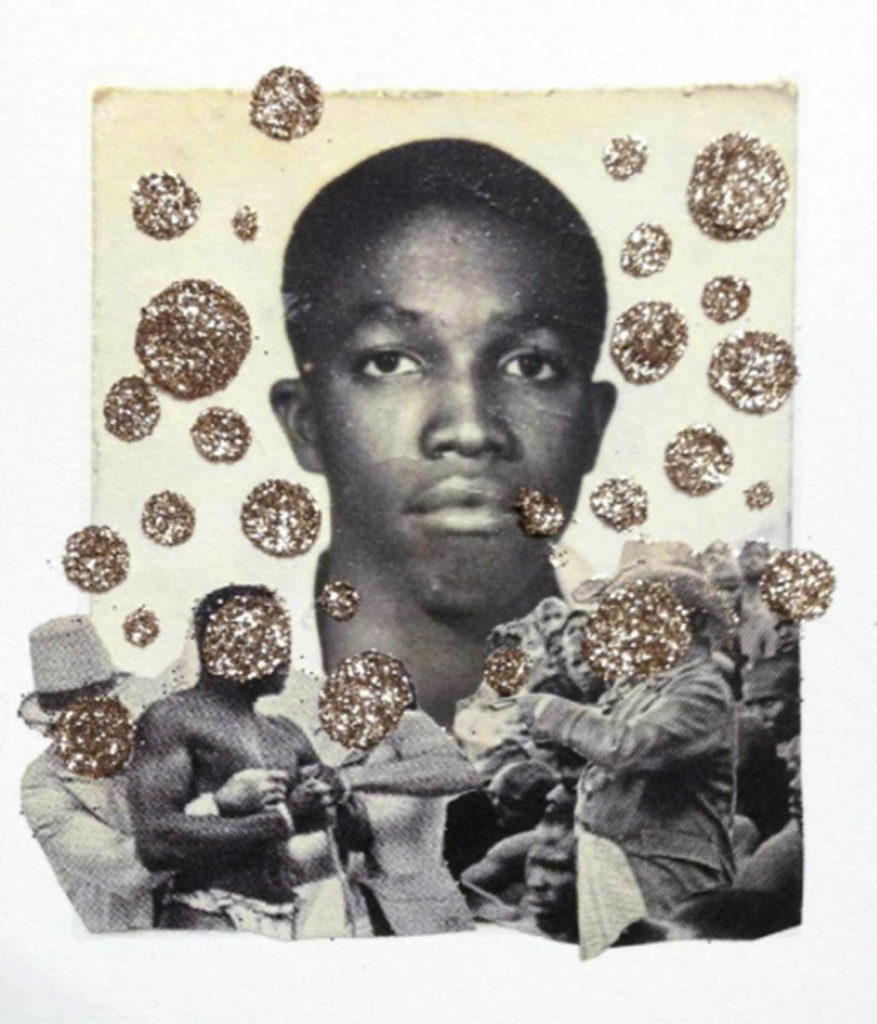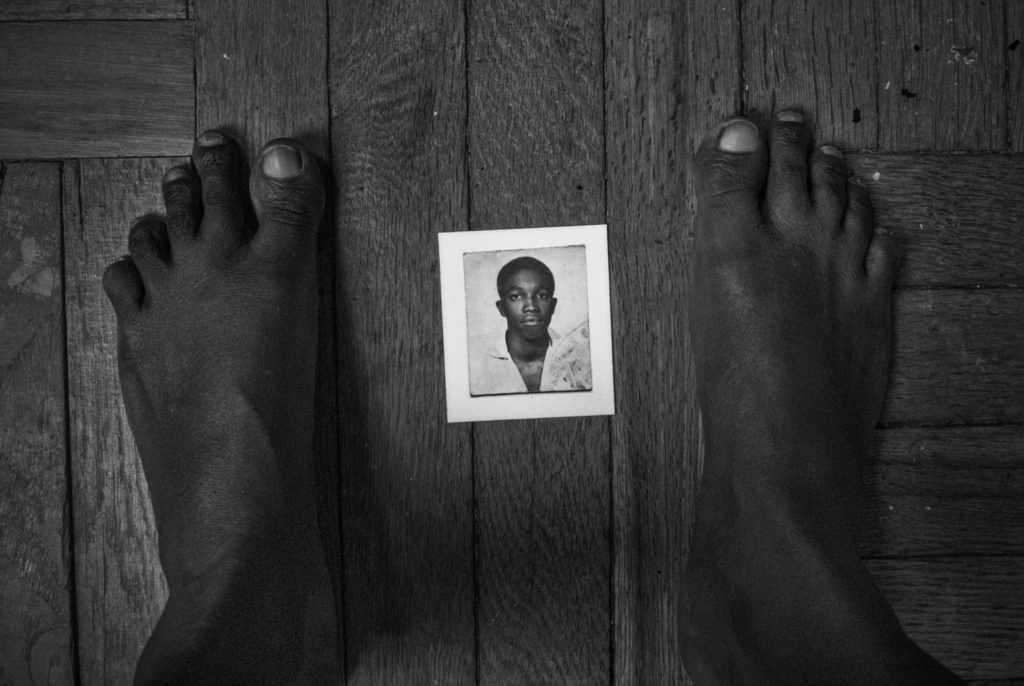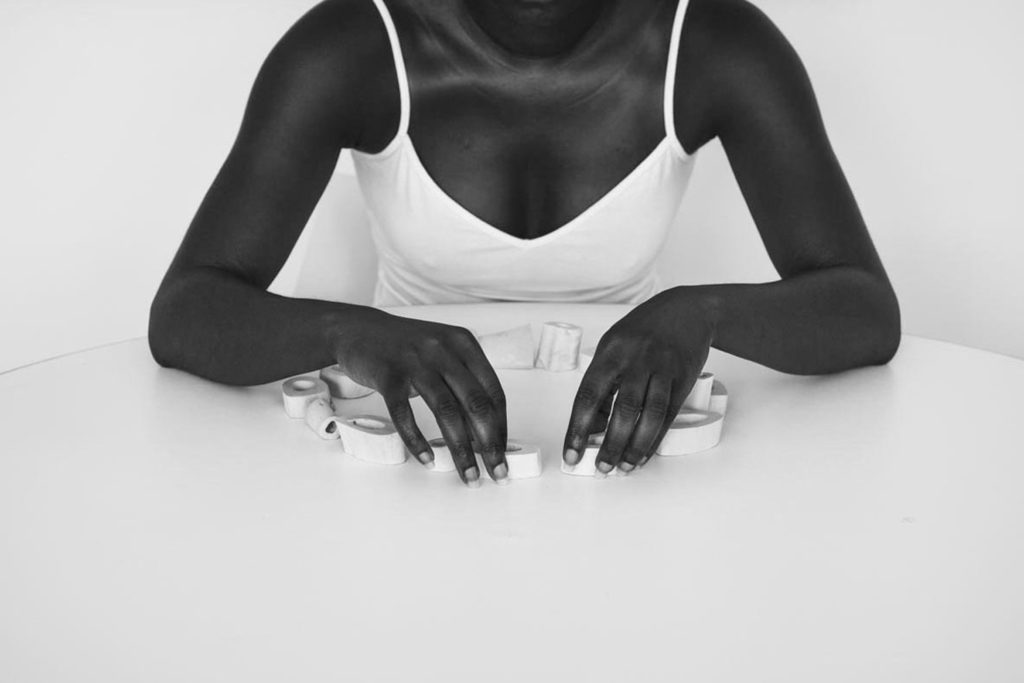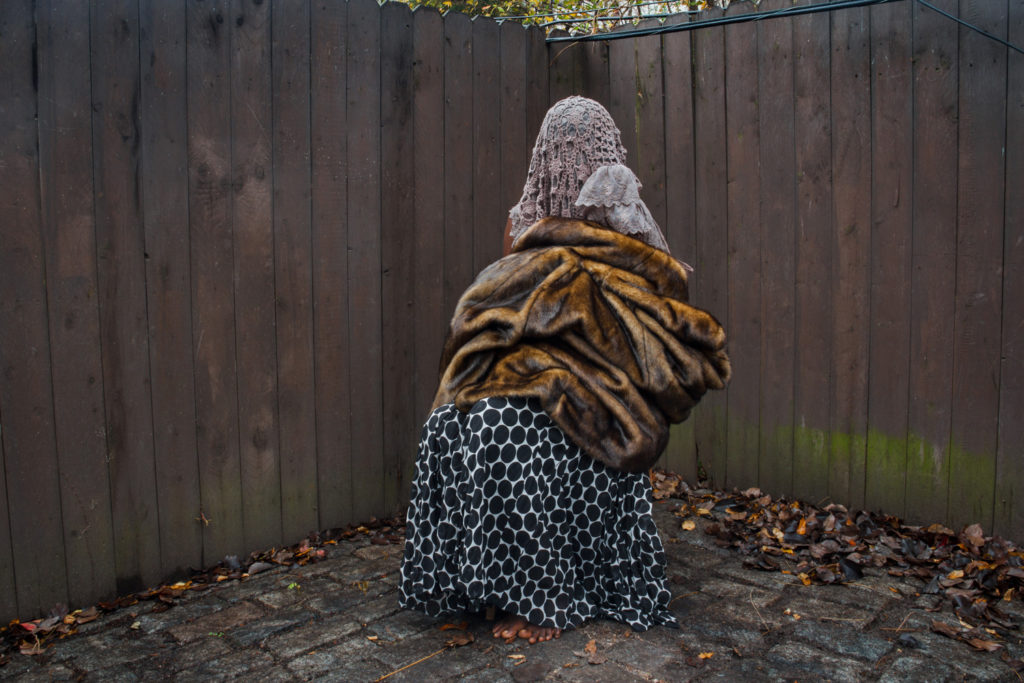Moko is pleased to present a series of conversations with visual artists in the Guyanese diaspora inspired by “Un | Fixed Homeland”, a recent exhibition of thirteen Guyanese artists at Aljira, a Center for Contemporary Art in Newark, NJ. Moko would like to thank Celeste Hamilton Dennis from OF NOTE Magazine for facilitating these interviews.In May, Moko contributor Kenesha Julius spoke with Erika DeFreitas. Here, she speaks with Keisha Scarville.

Keisha Scarville is a photo and multimedia artist who alters and reforms the perception of regular items through themes of transformation, migration and displacement. Raised by Guyanese parents, the Brooklyn based artist uses her art as a means of expressing her nationality and homeland, which has allowed her to be exhibited in a wide number of locations, for example, The Brooklyn Museum of Art and the Studio Museum of Harlem. In this brief interview, Scarville discusses her intuitive direction in both art and photography as well the artistic process surrounding them.
There is a lot of depth in you artwork. Do you find yourself using a form of critical theory to express your work? Does it affect your creative process and thinking?
There is no particular critical theory that completely informs my work. My work is influenced by various writers and philosophies. I love the writing of Gaston Bachelard. His book, ‘The Poetics of Space’, has changed the way I approached photographing spaces and landscapes.

In the Passport series, you have touched on the issues of immigration through the eyes of two generations and through the art of mixed media. How has using this type of medium help justify your artistic vision?
The series, “Passports” is an ongoing project where I repeatedly reinterpret my father’s earliest passport photo. I am interested in the aesthetics of a passport photo as a signifier but also the guidelines that inform how one positions and presents oneself within the frame. Through an interrogative process, I re-imagine the image of my father as a subject of a nation to forge a dialogue with the image. I use collage, paint, and other materials to transfigure and dislodge the unmoving stoicism of the printed image and create an alternate spatial narrative. In each piece, I respond to the shape shifting effects of immigration and my own personal history. I treat the photograph as a platform on which all these embedded and intertwined histories can be explored and layered.
In the I am Here Series, I see that passport photo being represented again along with images of a second person. Can you tell us what is this series is all about?
I am interested in the notion of home – how it is conceived, transformed, and lost. As a first generation Guyanese American, I often find myself occupying this hyphenated space where I don’t fully identify with being American nor am I considered Guyanese. I wonder what it means to create a space of belonging. What does it mean to designate a place/space as home? The “I am here” series is a personal journey towards claiming and understanding the conception of a home. In the project I explore how rituals, objects, spaces and the body can be visually excavated as primary sites of belonging. This series preceded the “Passports” project and was the impetus for developing that body of work.

It seems that you are no stranger to photography either. How did you come about learning and developing your skills in photography?
I first learned photography while in high school. It was a transformative experience — holding a camera for the first time and looking at the world around me, deciding what to capture, and then holding those moments in my hands forever. I have been completely obsessed and fascinated by photography from that time. I went on to study photography in undergrad, as well as, focusing on photography and art therapy through graduate level classes.

Do you see photography as a way to establish a new perspective in the art of storytelling and capturing moments?
I don’t think of it as new, but an alternative way of conveying narrative. I think people have always used photography to visually communicate stories. Now, more people have access to image-making devices. With the abundance and overwhelming speed at which we can produce images, my concern becomes how do we read these images. Like all forms of communication, we need to be able to develop a method to take careful consideration of what images do, how they operate, and how to deconstruct/interpret the narrative.

In an article for Vice Magazine, you spoke about the search of identity through imagery in a collection of photographs called Mama’s Clothes. How did you feel about this art piece and what would you like viewers to take from it?
In the series, “Mama’s Clothes,” I explore the experience of absence and the camera’s role in visualizing what cannot be seen, but felt. I explore the paradox of abundance within absence and the phenomenology of space. In the photographs, I present my body cloaked in my deceased mother’s clothes. I am interested in how the clothing can be transformed into residual, surrogate skin. In the series, I am looking at ways I can facilitate and construct a visual place where I can conjure her presence while using my body as a medium.

Also in this same series, the usage of clothing had a strong symbolic meaning. Most of your work weighs heavily on the contextualized meaning placed on everyday objects, which is not as subtle in most cases. Do you think this unique feature differentiates you as an artist?
A great deal of my work focuses on the biological, historical, and symbolic references of objects. I am currently part of a two-person exhibition at the Museum of Contemporary African Diasporan Arts (MoCADA) entitled, ‘Surrogate Skin: The Biology of Objects’. This project and exhibition allows me to showcase the elements that inform my art practice.

What future projects are you working on for this coming year?
Right now, I am working on a sculptural and photographic project that explores the metaphorical space of the shapeshifter. The project explores the nature of existence, and the malleability of identity as a source of power and social transgression. The show at MoCADA will run through April 9th of this year. In addition, I will be participating in a group show at Lesley Heller Workspace Gallery that opens later this month, as well as, a solo exhibition at the same gallery in November. I also will be participating in artist residencies at the Vermont Studio Center and Baxter Street Camera Club this year.
What final thoughts would you like to leave for young artists and photographers alike?
Break the rules, read as much as possible, and remain curious.
For more information on Keisha Scarville, kindly see her website www.keishascarville.com.